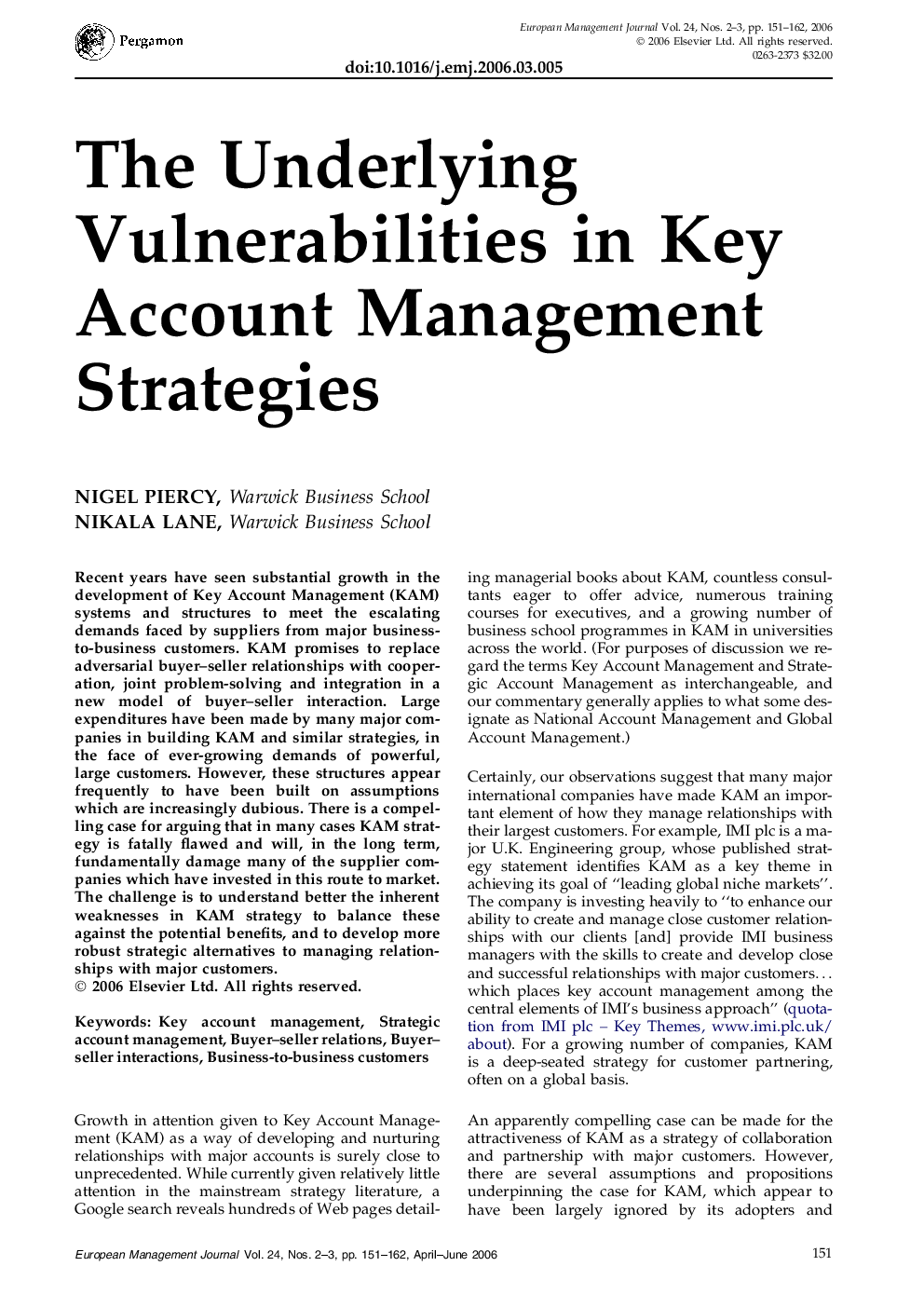| Article ID | Journal | Published Year | Pages | File Type |
|---|---|---|---|---|
| 1015383 | European Management Journal | 2006 | 12 Pages |
Recent years have seen substantial growth in the development of Key Account Management (KAM) systems and structures to meet the escalating demands faced by suppliers from major business-to-business customers. KAM promises to replace adversarial buyer–seller relationships with cooperation, joint problem-solving and integration in a new model of buyer–seller interaction. Large expenditures have been made by many major companies in building KAM and similar strategies, in the face of ever-growing demands of powerful, large customers. However, these structures appear frequently to have been built on assumptions which are increasingly dubious. There is a compelling case for arguing that in many cases KAM strategy is fatally flawed and will, in the long term, fundamentally damage many of the supplier companies which have invested in this route to market. The challenge is to understand better the inherent weaknesses in KAM strategy to balance these against the potential benefits, and to develop more robust strategic alternatives to managing relationships with major customers.
